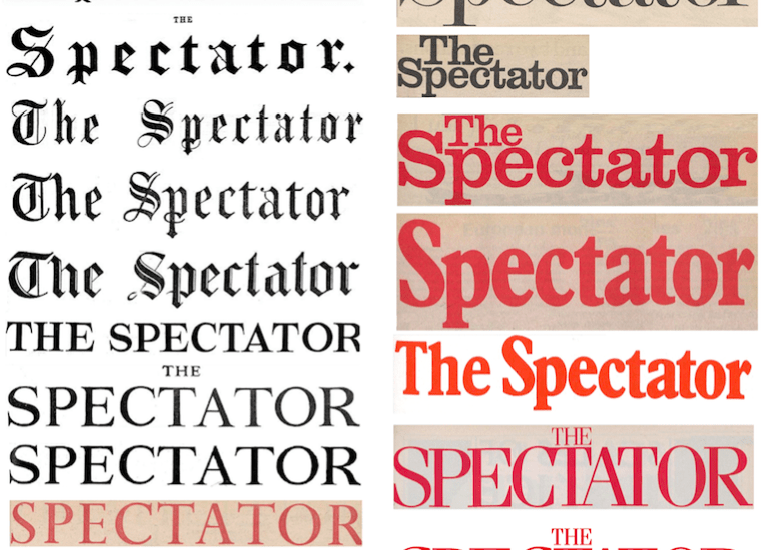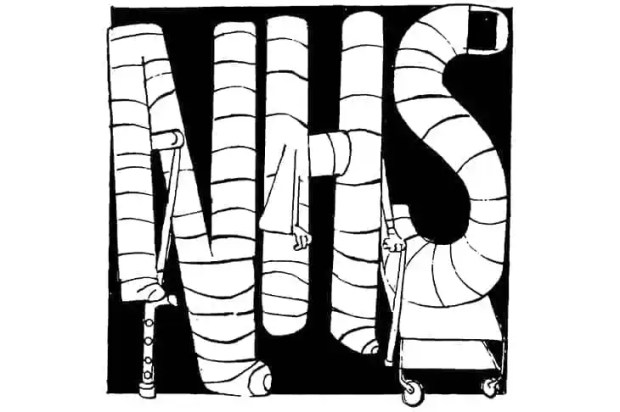The Spectator now has now reached a milestone unmatched in the global press, by becoming the first magazine to publish a 10,000th issue. To do justice to the history of the world’s oldest weekly magazine is a complex, perhaps even foolhardy task. Having spent the last three years piecing together its past, I can confirm that half a million multi-columned pages demand energetic trawling and patient sifting.
For most of its life, The Spectator has been more a newspaper than a magazine. Until the Second World War its first pages were occupied exclusively with summarising the previous week’s events. So the historian’s focus falls instead on the comment pieces that digest this news. But here a problem emerges: for The Spectator’s first century, these leading articles, along with the rest of the contents, were anonymous. This difficulty is compounded because early editors sedulously polished every page to produce a homogenous, Spectatorial house style.
Discerning who wrote what is only possible from external clues. But these do not exist in the obvious places: no archive of Spectator contributors survives, either in manuscript or ledger. The title’s true story must be woven together from newspaper gossip, rose-tinted memoirs, private correspondence and state records. Two partial histories of The Spectator give plenty of initial steer, but it was necessary to build from the bottom up. And revisiting primary sources brought with it plenty of surprises.
It was a shock, for instance, to turn up three editors that had been entirely forgotten from the magazine’s annals, erased either by accident or design. Rather more remarkable was the discovery that, at its lowest ebb in 1859-60, The Spectator was clandestinely owned by an American ambassador and secretly backed by the court of Napoleon III.
Both secured a steady stream of uncannily favourable overseas coverage, much to the bemusement of long-standing readers. To cover their tracks the slippery editor – Thornton Hunt, son of Leigh – was falsely announced as the proprietor. Suspicious hacks and confused subscribers knew something was afoot, and dropped off in droves. Sales figures did not bounce back for a decade.
Another surprise was that The Spectator’s fiercely independent founder, the Scotch firebrand Robert Rintoul, had been headhunted as the first editor of Jeremy Bentham’s Westminster Review. Happily, he refused.
The Spectator’s private dealings crop up in all sorts of correspondence. When an editor is turfed out, or a bidding war for the magazine emerges, both city and provincial papers fill their boots with tittle-tattle. Six of The Spectator’s 26 editors are still living, the oldest having taken up the reins in 1966. All, of course, are brimming with anecdotes. But for the rest, the truth sometimes survives only in private: the sole evidence for why one editor abruptly stood down lurks in a letter to his friend Winston Churchill.
Penetrate beyond the veil of anonymity, however, and pieces emerge from well-known hands: John Stuart Mill, Thomas Carlyle and Walter Bagehot. The advent of the byline in the 1920s brings the researcher some relief. It becomes a simple matter of patience to turn up heavy-hitting contributors such as Bertrand Russell, Thomas Mann, Jean-Paul Sartre and Gabriel García Márquez. Since The Spectator has always set great store by the quality of its writing, there is no less firepower among its staff writers: only partial justice can be done to columns filed by John Buchan, Graham Greene, John Betjeman and Hilary Mantel.
The magazine’s occasional writers have always converged from all corners of society: an article may come from Nancy Mitford or Ozzy Osbourne, Benefit Street’s White Dee or Clarence House’s Prince Charles. By being so close to the Establishment, The Spectator’s pages inevitably attract political power. Yes, the current Prime Minister edited the magazine for six and a half years. But of his 25 predecessors in Downing Street, all but two (Eden and Wilson) have made their appearance, albeit with different cases to make.
One genuine surprise was how pioneering The Spectator was in female journalism. For a few weeks in 1841, Rintoul’s daughter Henrietta served briefly as the first female editor anywhere in the national press – backdating that record by two decades. In the 1920s, The Spectator paid Iris Barry to help advance cutting edge of cinema criticism; in the 1950s, the magazine was the first high-brow weekly to introduce columns about women written by women.
The Spectator has had its fair share of highs and lows, of scoops and scandals. But despite moving through six premises – in the Strand, Bloomsbury and Westminster – it has remained a model of consistency in its core principles. A commitment to individual liberty, free trade and a free press runs through every age. Charting the dogged defence of these tenets has taught me plenty, not least that it is principle, not party allegiance, that keeps a journal live and kicking.
Got something to add? Join the discussion and comment below.
Get 10 issues for just $10
Subscribe to The Spectator Australia today for the next 10 magazine issues, plus full online access, for just $10.
David Butterfield is a Fellow of Queens’ College, Cambridge. His new history of The Spectator is available at a discount for subscribers. The complete Spectator archive is available here




















Comments
Don't miss out
Join the conversation with other Spectator Australia readers. Subscribe to leave a comment.
SUBSCRIBEAlready a subscriber? Log in